Nina Cooke John on winning United States Artists’ 2022 USA Fellowship
Architect Nina Cooke John and a further 63 artists working across ten disciplines have been announced 2022 USA Fellows by Chicago funding organisation United States Artists
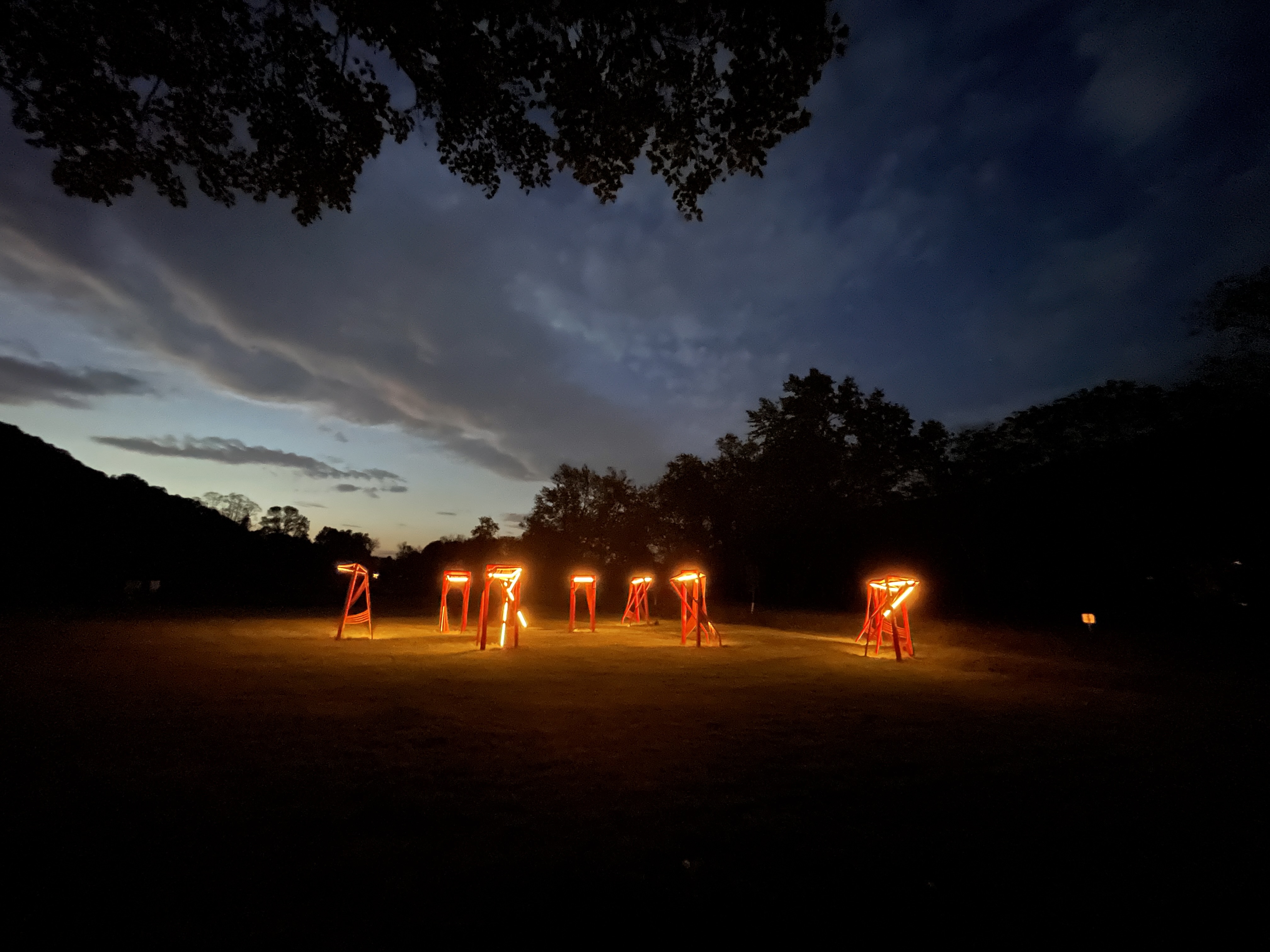
Architect Nina Cooke John is one of 63 artists working across ten disciplines that have been recently announced as 2022 USA Fellows by Chicago national arts funding organisation United States Artists. The prestigious acknowledgment encompasses $50,000 cash awards for a range of creatives, and the winning studios include architects Dream The Combine, Germane Barnes, Design Earth and SO – IL. Also among the winners is the dynamic young studio of Nina Cooke John, which was founded in New York in 2018.
Cooke John teaches as well as designs, and her work ranges from private homes to cultural buildings. Notably, she won the competition for a monument honouring abolitionist Harriet Tubman in New Jersey, set to replace a now-removed statue of Christopher Columbus on Newark’s Washington Square.
We caught up with the architect to talk about her practice, plans for the future, and what this recognition means to her.
Wallpaper* meets Nina Cooke John
Wallpaper*: Who is Nina Cooke John and what does your studio do?
Nina Cooke John: I am an architect and artist with a multidisciplinary practice. I was born and raised in Kingston, Jamaica, and my experience as an immigrant informs most of my work. My studio has primarily been engaged with residential architecture and has recently expanded to include public art. With art playing a larger role in how we understand the relationship between people in space, we’re able to create art and architecture that inform each other, and overlap, at multiple scales.
W*: What projects are you working on at the moment?
NCJ: I’m working on a house project in St Vincent and the Grenadines, for which construction just started at the beginning of the year. I’m excited to see it going up. I’m also at the beginning stages of brainstorming ideas for a public art project to be installed on the waterfront in Alexandria, Virginia. Developing our proposal for the Harriet Tubman Monument in Newark, New Jersey, has most of my attention right now. The project has several moving parts, as we’re incorporating a robust combination of community input elements – with both tactile and audio components – which will be integrated into the monument. We’re in the thick of working with the fabricators on the details so that the final product is impeccably crafted and stunning.
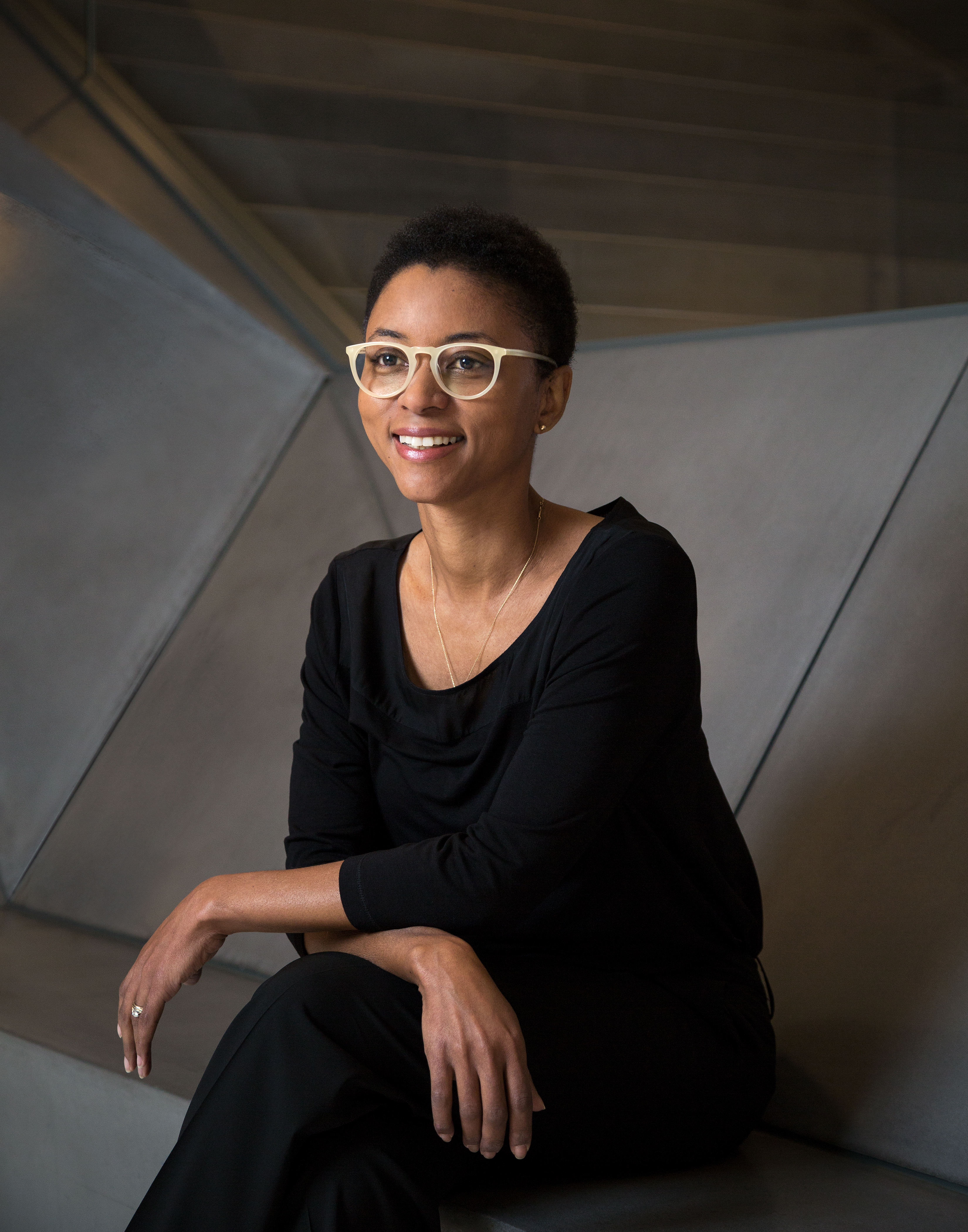
Architect and artist Nina Cooke John.
W*: What excites you about architecture?
NCJ: As a society, we are only recently coming to terms with how powerful a tool architecture is in shaping our lives. Architecture has the power to promote a sense of belonging – a feeling of being at home – whether in private spaces or in public. I am excited about how architecture can promote civic engagement. Through the power of placemaking – creating spaces in public in which people engage with their community, meet their neighbours, make friends, and make memories – architecture can promote political action. As members of any community are given the space to be seen, they connect to the place and to their role as active members of the society.
W*: What would be your dream project?
NCJ: I just developed a brief for my students at Columbia University for a project that I’d love to be doing myself. The studio addresses fugitivity and sanctuary – looking at both the Underground Railroad and the Sanctuary Movement in the Hudson Valley – through the common lens of exploitative labour practices in the agriculture industry, past and present. The students will create a collection of spaces that will be a historical marker of the antebellum collective network while recognising the ongoing tyranny that keeps undocumented immigrants in a constant state of fear. So, my dream project would be designing a cultural institution that acts as a memorial, museum, sanctuary and community space that takes advantage of the natural environment, history and current social conditions to inform how it engages the landscape and people.
Receive our daily digest of inspiration, escapism and design stories from around the world direct to your inbox.
W*: Who and/or what influences you? What references do you like using?
NCJ: I reference city life often; that urban condition of multiple things happening at the same time, people from all different backgrounds colliding and the beauty that emerges from that intensity. I always come back to the work of Christo and Jeanne-Claude and how insertions in the landscape can transform how we understand the place, both while the installation is there and after it leaves – we see it in a totally new way just because of this disturbance. I’ve also been thinking about the human body; how we exist, engage and move around space individually and collectively. The sculptor Basil Watson is known for his prominent pieces like the Martin Luther King Jr statue recently installed in Atlanta. I’m always delighted to see his figure drawings pop up in my Instagram feed. He explores the multiple expressions of the body, sometimes with agonising contortions, (The Race is one example) that reveal a human rawness that I find spellbinding.
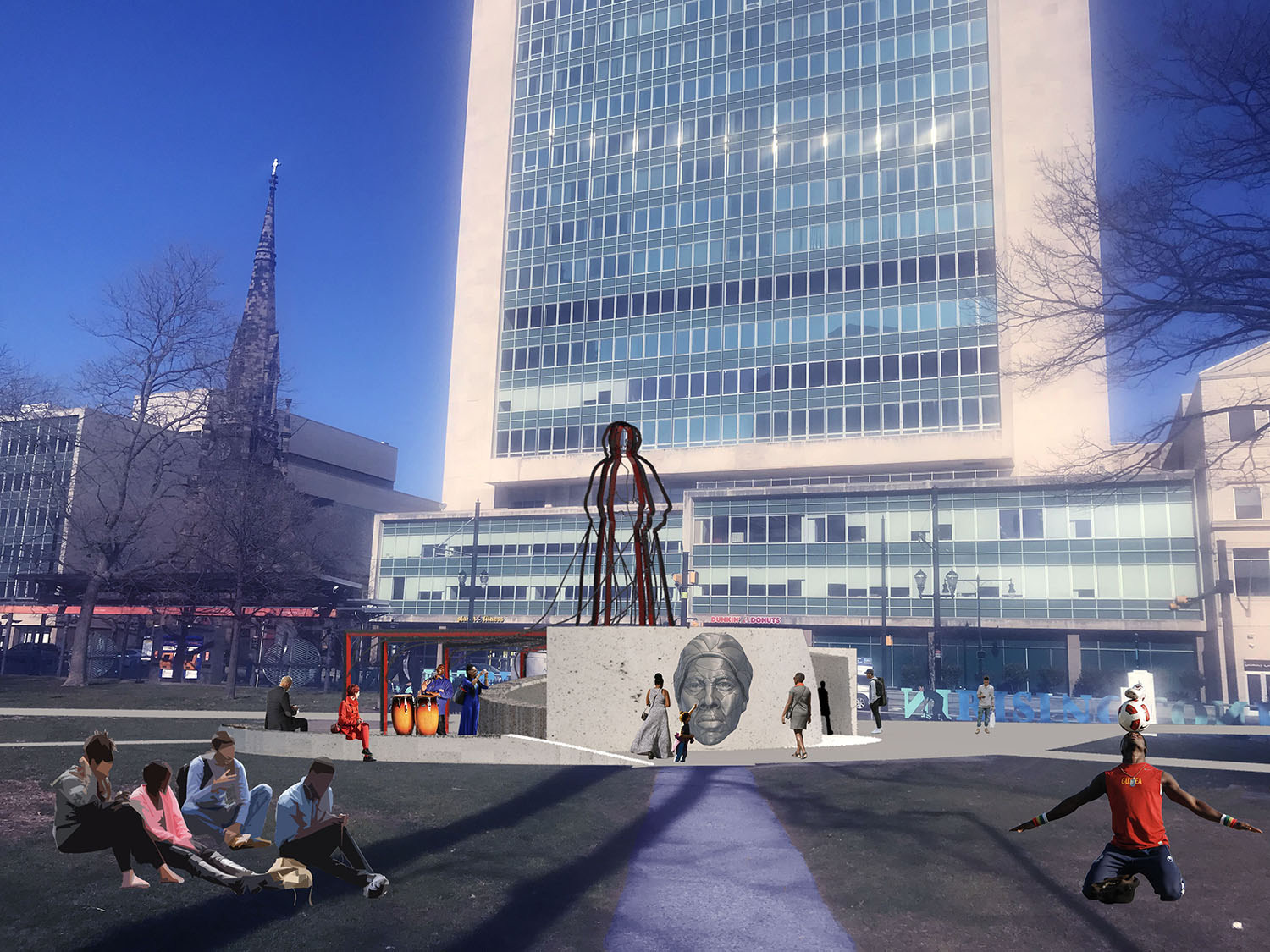
Rendering of Harriet Tubman Monument
W*: What does the United States Artists Fellowship award mean to you?
NCJ: This award is huge. It is a recognition of the beginning of my work at the interstices of art and architecture. I say ‘a beginning’ because it will allow me to continue to expand that work in a more deliberate way.
W*: What are you planning to do with the award sum?
NCJ: I’ve bought myself a new camera. My last one was a Pentax K1000 that I bought in 1992 while I was an undergraduate. I plan on using the camera as a critical tool for the observation of public landscapes of varying types. I’m planning on carving out more time to spend on non-client-driven work – work that is experimental and exploratory.
W*: Where do you see your studio in ten years?
NCJ: In ten years, I will still have a multidisciplinary practice, with equal footing in the art and architecture worlds. We will have more institutional projects that engage the public around cultural programming. We will continue to do public installations of sculptural pieces that encourage engagement and interaction. We will also have expanded the residential work to include more house projects that creatively engage the landscape with innovative form and detailing.

Close up rendering of Harriet Tubman Monument.
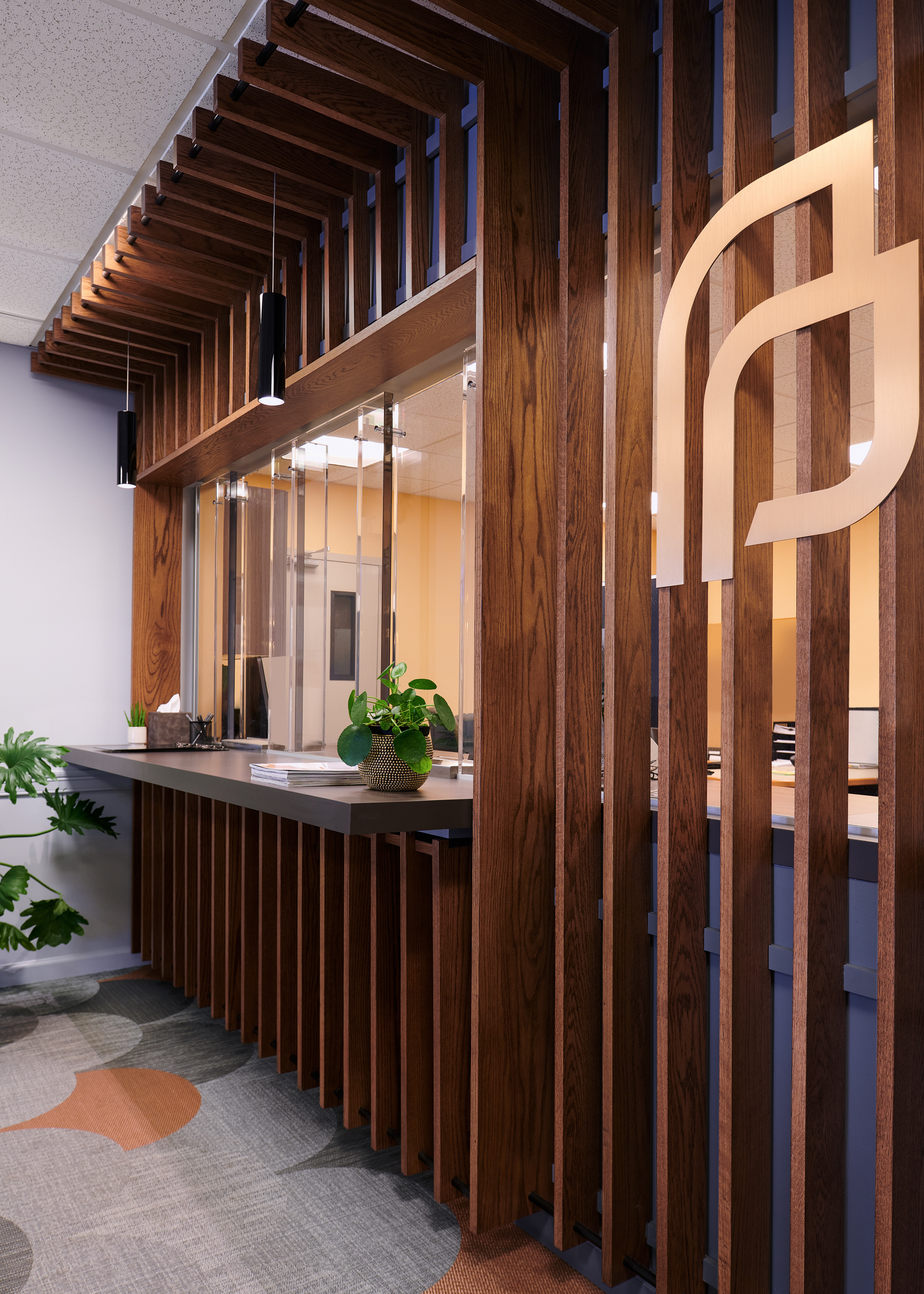
Planned Parenthood of Metropolitan New Jersey Lobby Renovation.

Christopher Street House Renovation.
INFORMATION
Ellie Stathaki is the Architecture & Environment Director at Wallpaper*. She trained as an architect at the Aristotle University of Thessaloniki in Greece and studied architectural history at the Bartlett in London. Now an established journalist, she has been a member of the Wallpaper* team since 2006, visiting buildings across the globe and interviewing leading architects such as Tadao Ando and Rem Koolhaas. Ellie has also taken part in judging panels, moderated events, curated shows and contributed in books, such as The Contemporary House (Thames & Hudson, 2018), Glenn Sestig Architecture Diary (2020) and House London (2022).
-
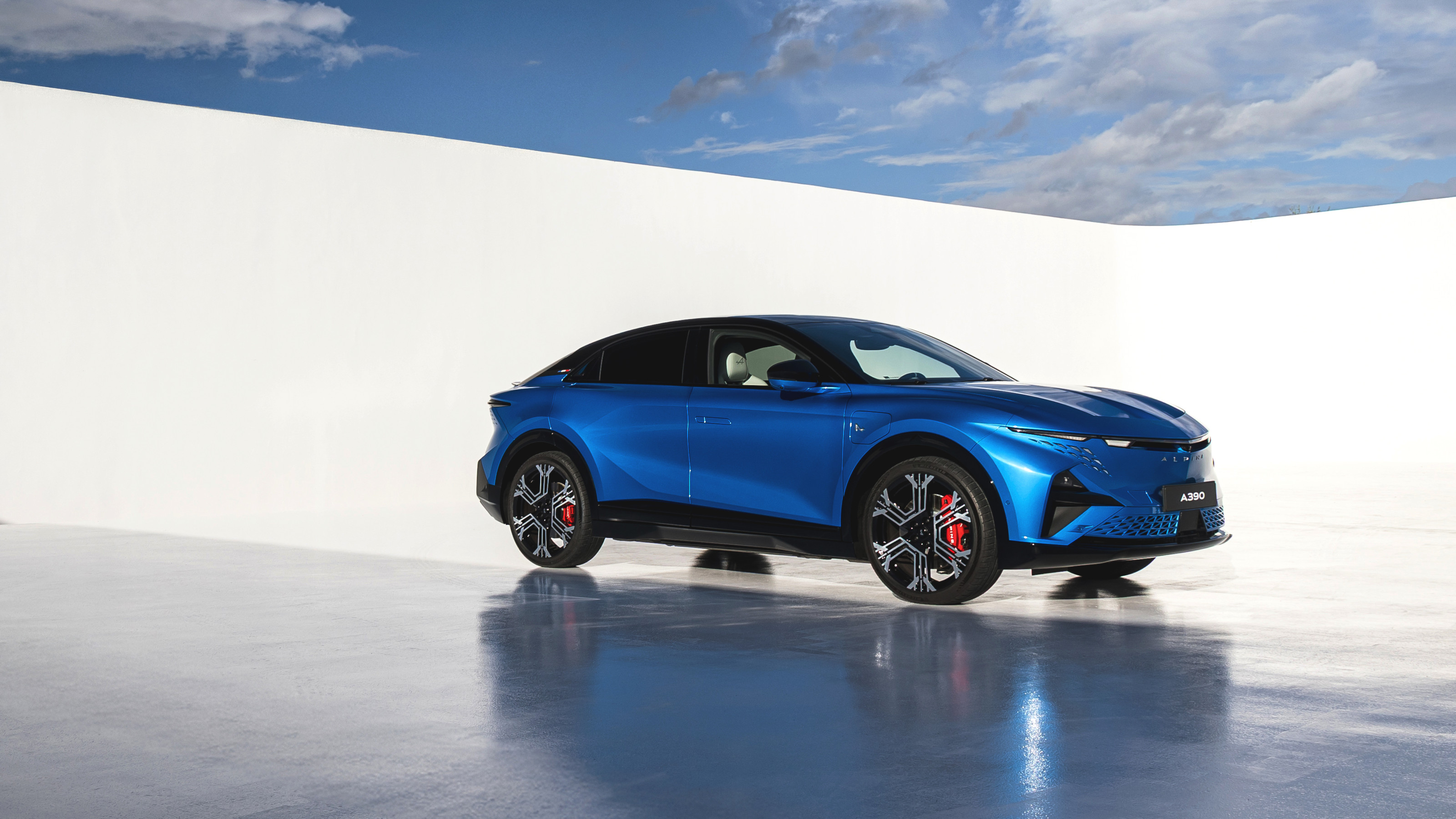 Alpine A390 GT: French, fast and fun. A sporting EV with a real sense of occasion
Alpine A390 GT: French, fast and fun. A sporting EV with a real sense of occasionAlpine doubles down on its fast electric credentials with the A390 GT, the French performance brand’s largest car to date
-
 Forget smart homes, Doma's 'intelligent' doors open at the sight of a familiar face
Forget smart homes, Doma's 'intelligent' doors open at the sight of a familiar faceYves Béhar and Jason Johnson have founded Doma, a tech start-up dedicated to seamlessly integrating tech into your daily life
-
 Messika imbues minimalist diamond jewellery with a contemporary edge
Messika imbues minimalist diamond jewellery with a contemporary edgeMessika embrace sharp angles and precious materials in a striking jewellery piece
-
 Step inside this resilient, river-facing cabin for a life with ‘less stuff’
Step inside this resilient, river-facing cabin for a life with ‘less stuff’A tough little cabin designed by architects Wittman Estes, with a big view of the Pacific Northwest's Wenatchee River, is the perfect cosy retreat
-
 RIBA House of the Year 2025 is a ‘rare mixture of sensitivity and boldness’
RIBA House of the Year 2025 is a ‘rare mixture of sensitivity and boldness’Topping the list of seven shortlisted homes, Izat Arundell’s Hebridean self-build – named Caochan na Creige – is announced as the RIBA House of the Year 2025
-
 Remembering Robert A.M. Stern, an architect who discovered possibility in the past
Remembering Robert A.M. Stern, an architect who discovered possibility in the pastIt's easy to dismiss the late architect as a traditionalist. But Stern was, in fact, a design rebel whose buildings were as distinctly grand and buttoned-up as his chalk-striped suits
-
 A revived public space in Aberdeen is named Scotland’s building of the year
A revived public space in Aberdeen is named Scotland’s building of the yearAberdeen's Union Terrace Gardens by Stallan-Brand Architecture + Design and LDA Design wins the 2025 Andrew Doolan Best Building in Scotland Award
-
 Own an early John Lautner, perched in LA’s Echo Park hills
Own an early John Lautner, perched in LA’s Echo Park hillsThe restored and updated Jules Salkin Residence by John Lautner is a unique piece of Californian design heritage, an early private house by the Frank Lloyd Wright acolyte that points to his future iconic status
-
 The Stahl House – an icon of mid-century modernism – is for sale in Los Angeles
The Stahl House – an icon of mid-century modernism – is for sale in Los AngelesAfter 65 years in the hands of the same family, the home, also known as Case Study House #22, has been listed for $25 million
-
 Houston's Ismaili Centre is the most dazzling new building in America. Here's a look inside
Houston's Ismaili Centre is the most dazzling new building in America. Here's a look insideLondon-based architect Farshid Moussavi designed a new building open to all – and in the process, has created a gleaming new monument
-
 Frank Lloyd Wright’s Fountainhead will be opened to the public for the first time
Frank Lloyd Wright’s Fountainhead will be opened to the public for the first timeThe home, a defining example of the architect’s vision for American design, has been acquired by the Mississippi Museum of Art, which will open it to the public, giving visitors the chance to experience Frank Lloyd Wright’s genius firsthand